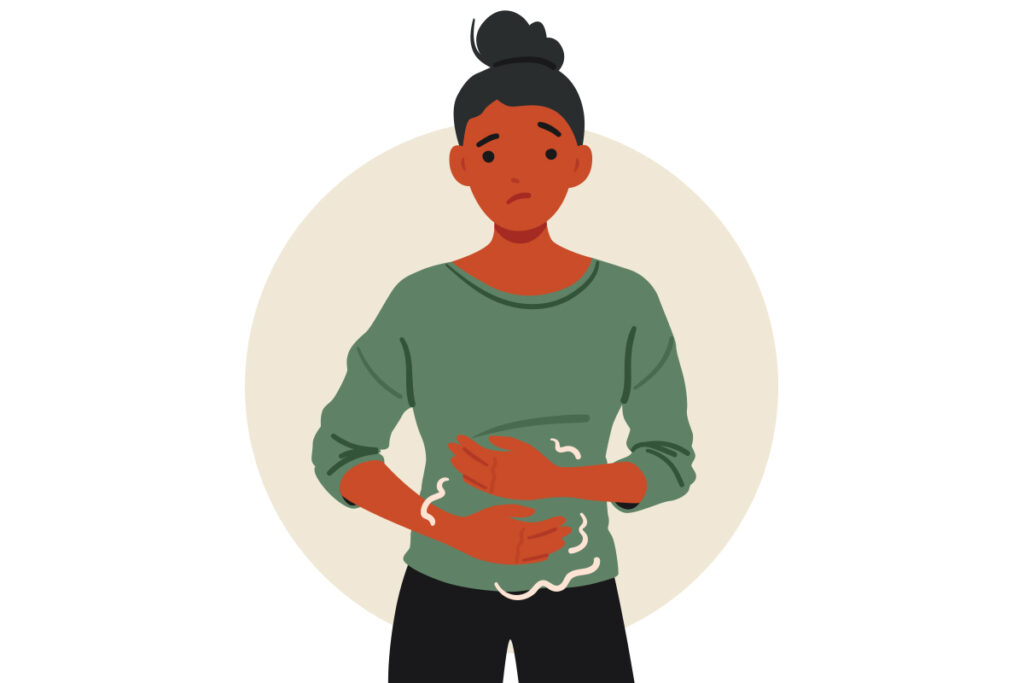Up to 13% of our youth will experience at least one eating disorder by age 20. Are you paying attention to the signs?

In society today, eating disorders are more common than we might like to admit. Day after day, we see people praised for following strict diets, eating “clean,” and working out to exhaustion. However, sometimes the behaviors that we applaud can be subtle indicators of disordered eating.
“So much of our worth is being determined by a numerical value such as weight, clothing size, steps per day, and calories consumed,” says Addie Bramlett, director of nutrition services and certified eating disorder registered dietitian with Focus Treatment Centers. “There is always a new diet promising happiness and success if certain food rules are followed.”



Dr. Jan Sherbak, a clinical psychologist and certified eating disorder specialist, explains that dieting is the primary predictor of the development of an eating disorder. “In a recent study, over 58% of adolescent girls and over 28% of adolescent boys admitted to actively dieting.”
Eating disorders are not limited to any one group of people. There’s not one body shape that suggests a problem, nor one gender. Both genetics and personality traits have been linked to the development of eating disorders, as have culture pressures and biological differences in brain development.
According to the Diagnostic and Statistical Manual of Mental Disorders, the three primary types of eating disorders are: anorexia nervosa, bulimia nervosa, and binge eating. Dr. Ahmed Ibrahim, a psychiatrist with Parkridge Valley Hospital, explains, “When people have anorexia nervosa, they see themselves as overweight, even when they are clearly underweight. Symptoms can include weighing oneself repeatedly, eating very small quantities of food, exercising excessively, and more. People with bulimia nervosa tend to have binge-eating episodes followed by purging (vomiting, using laxatives or diuretics, fasting, excessive exercise, or a combination). Binge-eating disorder indicates losing control over eating, but without purging behavior.”
Unfortunately, by the time a person is demonstrating symptoms of a full-blown eating disorder, it becomes more difficult to treat and leaves the sufferer at a greater risk of relapsing. It can also mean more mental and physical consequences.
The good news, though, is that body image issues and disordered eating don’t have to turn into a full-fledged eating disorder – there are signs to look for. If caught, addressed, and treated early, our loved ones can return to a happy and healthy path.
These subtle signs may suggest a loved one is struggling with their relationship with food.
Fixating on “Safe” Foods
It’s important to nourish your body with healthy foods, but a fixation on eating clean can develop into an unhealthy habit if not controlled. “There is even a term coined for this condition – orthorexia nervosa – to describe obsessive traits attributed to healthy eating, although it is not recognized as a psychiatric disorder,” says Dr. Ibrahim. If not curbed, orthorexia can develop into a full-blown eating disorder.
“At some point in time, ‘clean eating’ was meant to describe a form of eating that targets health, but it has become dangerous and out of control all too fast,” says Bramlett. “What once seemed innocent has now become an unhealthy obsession with eating specific healthy foods. The lack of evidence-based information and concern for health consequences is being overlooked.”
Signs of an unhealthy fixation can include a very limited diet where foods deemed safe are eaten over and over again. Cutting out once-enjoyed foods or entire food groups is another red flag. You may also notice a person compulsively checking ingredient lists and nutrition labels or spending considerable time stressing about what food might be served at upcoming events.
The Media's Effect on Disordered Eating
Poor Body Image
Everyone has days when they don’t feel their absolute best, but those thoughts are fleeting – not obsessive. If your loved one continually uses negative self-talk (e.g. “I’m so fat!”), it can be a sign that it’s more than just an issue with self-confidence.
Negative or obsessive thoughts about body size are a key factor in all eating disorders. If you see someone pulling on skin to check for excess fat or refusing to see anything positive about their body, that can signify an inaccurate mental picture. It’s especially easy to fall prey to a poor body image given the idealized representation of “perfect” bodies in the media today.
Excessive Exercise
Exercise is a very important part of a healthy lifestyle, but too much exercise can be a red flag.

“There is no doubt that our culture, specifically the increase in media use by all ages, contributes to eating disorders,” says Dr. Sherbak. “For example, the island of Fiji was introduced to television in 1995, and within five years, a nearly 70% increase in eating disorders or body dissatisfaction occurred.”
For some folks looking to lose weight or get in shape, hitting the gym regularly is a great way to kick-start a positive habit, but intense, over-the-top workouts can go hand in hand with disordered eating and lead to obsessive tendencies.
Dr. Ibrahim explains, “Patients with anorexia nervosa or bulimia nervosa use excessive exercise as a purging mechanism to compensate for binge eating or even regular eating. They may exercise multiple times for several hours every day.”
While it can be difficult to identify exactly what “excessive” exercise is, especially in athletes and active adolescents, there are a couple of things to look for. First, does your loved one panic or get angry if they are forced to miss a day of exercise? Another indicator is working out even when injured or sick. An overemphasis or obsession with fitness apps should alert you to a potential problem, as well.
Changes at Mealtime
For some individuals struggling with disordered eating, you may notice the creation of specific rituals around mealtimes. “These rituals can include eating alone, cutting food into very small bites, or eating very slowly or very quickly,” says Bramlett.
Rituals are where obsessive tendencies kick in. You may notice that your loved one only uses specific utensils when eating, only eats at certain times, or may even refuse to eat anything that they didn’t prepare themselves. For those with eating disorders, regimented eating habits provide a sense of control.
Turning down food is another red flag. “Someone may regularly turn down foods at mealtimes by stating that they just ate, are eating after the meal, or are even allergic to what is being served in hopes to avoid eating,” explains Bramlett.
Some Sobering Statistics
Approximately 7 in 10 women and girls report a decline in body confidence and increase in beauty and appearance anxiety, which they say is driven by the pressure for perfection from media and advertising’s unrealistic standard of beauty.
Seventy-nine percent of girls and 85% of women admit to opting out of important events in their lives when they don’t feel they look their best.
Nine out of 10 women say they will actually not eat and risk putting their health at stake when they feel bad about their body image. And 7 in 10 girls said they’re more likely to be less assertive in their decisions when they’re feeling insecure.
Weight Changes
One of the more common symptoms you might notice with a loved one facing an eating disorder is sudden weight loss. And oftentimes, these changes actually garner praise from others (e.g. “You look great! Have you lost weight?”).
It’s important to remember, though, that eating disorders don’t only present as substantial weight loss. Binge eating is the most common eating disorder in the United States today, and it can result in significant weight gain. With binge eating, people often feel guilt or shame and therefore tend to hide their binges from others. You may not notice a particular increase in the amount of food being eaten, but a sudden weight change in either direction is not something to ignore.
If you think your loved one may be suffering from an eating disorder, approach them in a kind and encouraging way. “A compassionate approach is best,” says Dr. Sherbak. “Comments about their weight are generally not helpful and can often increase behaviors. The focus should be on the individual’s health and emotional well-being, so any changes noted by loved ones should be expressed out of love and concern.” Offer to help them find professional treatment and remind them you love them very much. The path to happiness and healthiness is within reach.

Addie Bramlett
Director of Nutrition Services and Certified Eating Disorder Registered Dietitian, Focus Treatment Centers

Dr. Ahmed Ibrahim
Psychiatrist, Parkridge Valley Hospital

Dr. Jan Sherbak
Clinical Psychologist and Certified Eating Disorder Specialist




